Yury Dvorkin
Decision-Focused Learning for Complex System Identification: HVAC Management System Application
Jan 24, 2025
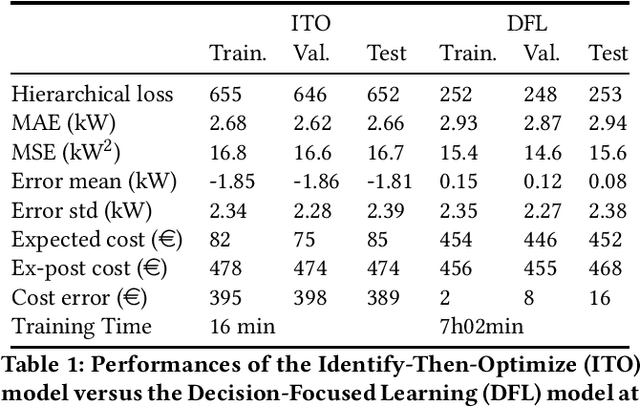
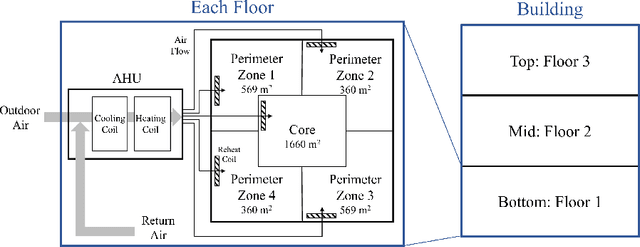
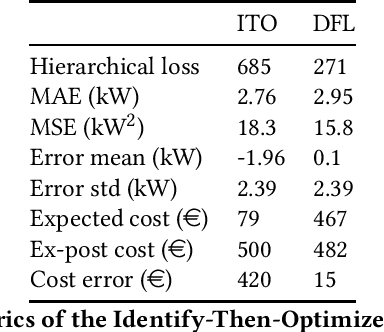
Abstract:As opposed to conventional training methods tailored to minimize a given statistical metric or task-agnostic loss (e.g., mean squared error), Decision-Focused Learning (DFL) trains machine learning models for optimal performance in downstream decision-making tools. We argue that DFL can be leveraged to learn the parameters of system dynamics, expressed as constraint of the convex optimization control policy, while the system control signal is being optimized, thus creating an end-to-end learning framework. This is particularly relevant for systems in which behavior changes once the control policy is applied, hence rendering historical data less applicable. The proposed approach can perform system identification - i.e., determine appropriate parameters for the system analytical model - and control simultaneously to ensure that the model's accuracy is focused on areas most relevant to control. Furthermore, because black-box systems are non-differentiable, we design a loss function that requires solely to measure the system response. We propose pre-training on historical data and constraint relaxation to stabilize the DFL and deal with potential infeasibilities in learning. We demonstrate the usefulness of the method on a building Heating, Ventilation, and Air Conditioning day-ahead management system for a realistic 15-zone building located in Denver, US. The results show that the conventional RC building model, with the parameters obtained from historical data using supervised learning, underestimates HVAC electrical power consumption. For our case study, the ex-post cost is on average six times higher than the expected one. Meanwhile, the same RC model with parameters obtained via DFL underestimates the ex-post cost only by 3%.
Causative Cyberattacks on Online Learning-based Automated Demand Response Systems
Jul 27, 2023Abstract:Power utilities are adopting Automated Demand Response (ADR) to replace the costly fuel-fired generators and to preempt congestion during peak electricity demand. Similarly, third-party Demand Response (DR) aggregators are leveraging controllable small-scale electrical loads to provide on-demand grid support services to the utilities. Some aggregators and utilities have started employing Artificial Intelligence (AI) to learn the energy usage patterns of electricity consumers and use this knowledge to design optimal DR incentives. Such AI frameworks use open communication channels between the utility/aggregator and the DR customers, which are vulnerable to \textit{causative} data integrity cyberattacks. This paper explores vulnerabilities of AI-based DR learning and designs a data-driven attack strategy informed by DR data collected from the New York University (NYU) campus buildings. The case study demonstrates the feasibility and effects of maliciously tampering with (i) real-time DR incentives, (ii) DR event data sent to DR customers, and (iii) responses of DR customers to the DR incentives.
A Physics-Informed Machine Learning for Electricity Markets: A NYISO Case Study
Mar 31, 2023



Abstract:This paper addresses the challenge of efficiently solving the optimal power flow problem in real-time electricity markets. The proposed solution, named Physics-Informed Market-Aware Active Set learning OPF (PIMA-AS-OPF), leverages physical constraints and market properties to ensure physical and economic feasibility of market-clearing outcomes. Specifically, PIMA-AS-OPF employs the active set learning technique and expands its capabilities to account for curtailment in load or renewable power generation, which is a common challenge in real-world power systems. The core of PIMA-AS-OPF is a fully-connected neural network that takes the net load and the system topology as input. The outputs of this neural network include active constraints such as saturated generators and transmission lines, as well as non-zero load shedding and wind curtailments. These outputs allow for reducing the original market-clearing optimization to a system of linear equations, which can be solved efficiently and yield both the dispatch decisions and the locational marginal prices (LMPs). The dispatch decisions and LMPs are then tested for their feasibility with respect to the requirements for efficient market-clearing results. The accuracy and scalability of the proposed method is tested on a realistic 1814-bus NYISO system with current and future renewable energy penetration levels.
Machine Learning for Electricity Market Clearing
May 23, 2022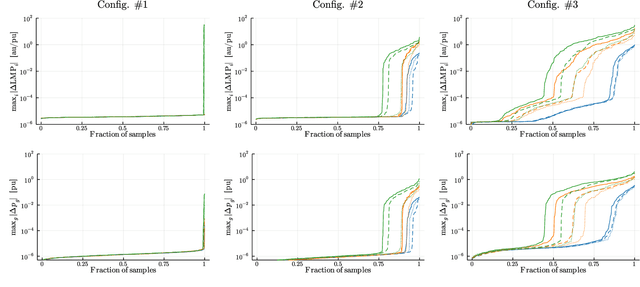
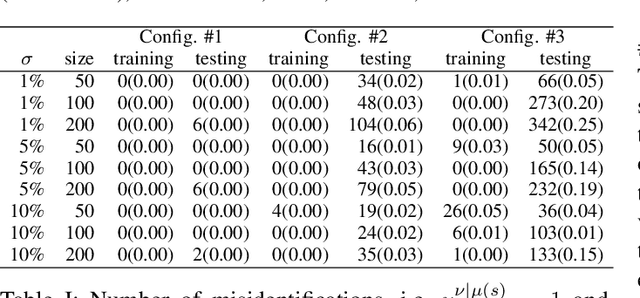

Abstract:This paper seeks to design a machine learning twin of the optimal power flow (OPF) optimization, which is used in market-clearing procedures by wholesale electricity markets. The motivation for the proposed approach stems from the need to obtain the digital twin, which is much faster than the original, while also being sufficiently accurate and producing consistent generation dispatches and locational marginal prices (LMPs), which are primal and dual solutions of the OPF optimization, respectively. Availability of market-clearing tools based on this approach will enable computationally tractable evaluation of multiple dispatch scenarios under a given unit commitment. Rather than direct solution of OPF, the Karush-Kuhn-Tucker (KKT) conditions for the OPF problem in question may be written, and in parallel the LMPs of generators and loads may be expressed in terms of the OPF Lagrangian multipliers. Also, taking advantage of the practical fact that many of the Lagrangian multipliers associated with lines will be zero (thermal limits are not binding), we build and train an ML scheme which maps flexible resources (loads and renewables) to the binding lines, and supplement it with an efficient power-grid aware linear map to optimal dispatch and LMPs. The scheme is validated and illustrated on IEEE models. We also report a trade of analysis between quality of the reconstruction and number of samples needed to train the model.
* Accepted for presentation in 11th Bulk Power Systems Dynamics Sympsium (IREP 2022), July 25-30, 2022, Banff, Canada
A Hierarchical Approach to Multi-Energy Demand Response: From Electricity to Multi-Energy Applications
May 05, 2020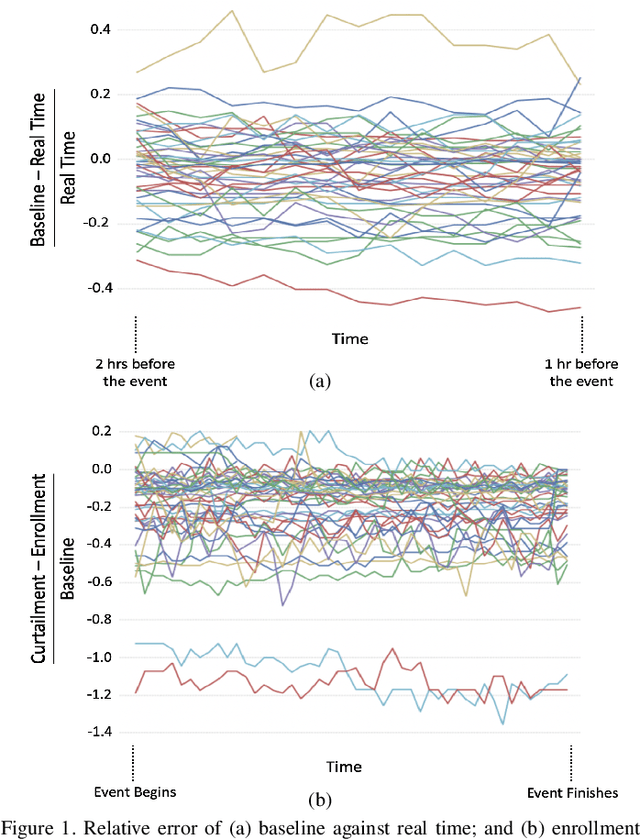
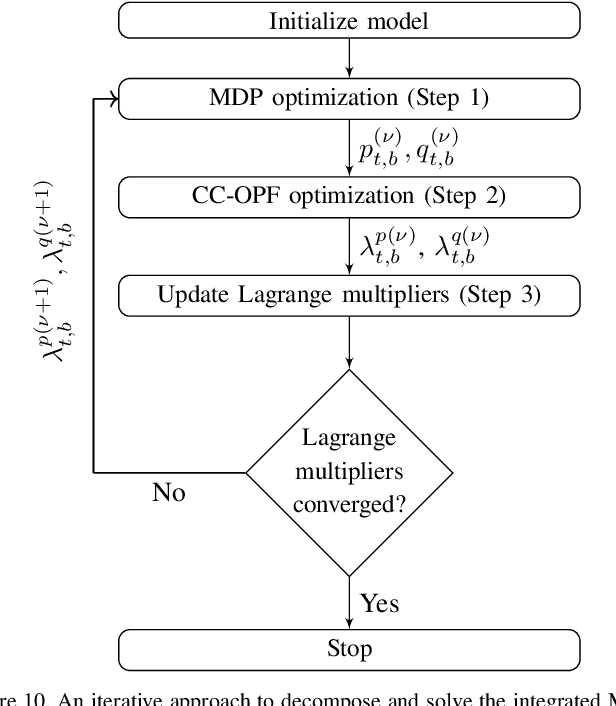
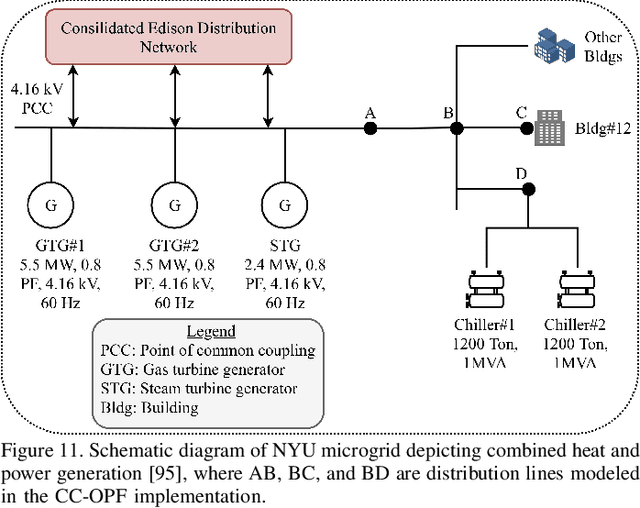
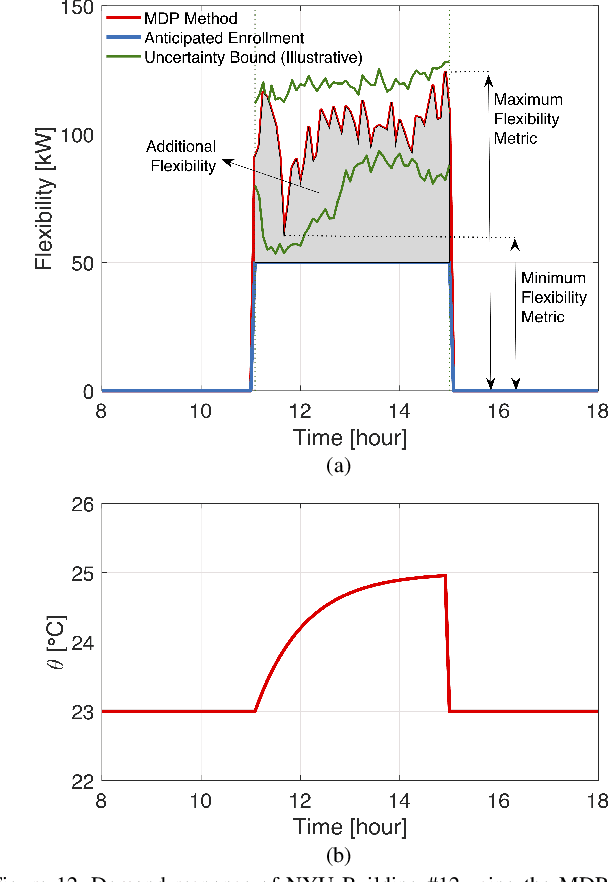
Abstract:Due to proliferation of energy efficiency measures and availability of the renewable energy resources, traditional energy infrastructure systems (electricity, heat, gas) can no longer be operated in a centralized manner under the assumption that consumer behavior is inflexible, i.e. cannot be adjusted in return for an adequate incentive. To allow for a less centralized operating paradigm, consumer-end perspective and abilities should be integrated in current dispatch practices and accounted for in switching between different energy sources not only at the system but also at the individual consumer level. Since consumers are confined within different built environments, this paper looks into an opportunity to control energy consumption of an aggregation of many residential, commercial and industrial consumers, into an ensemble. This ensemble control becomes a modern demand response contributor to the set of modeling tools for multi-energy infrastructure systems.
Data-Driven Learning and Load Ensemble Control
Apr 20, 2020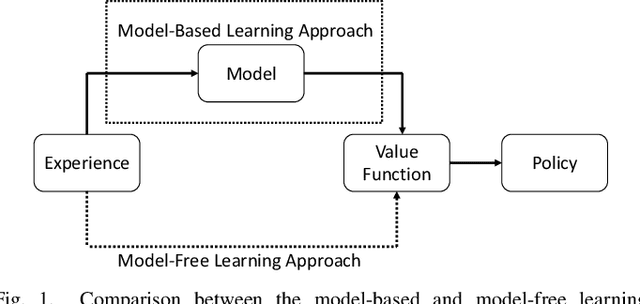
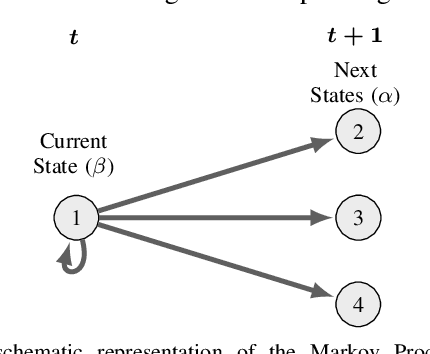
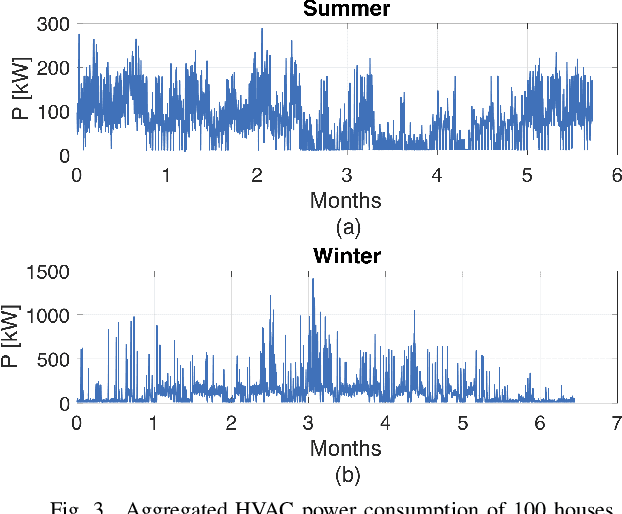
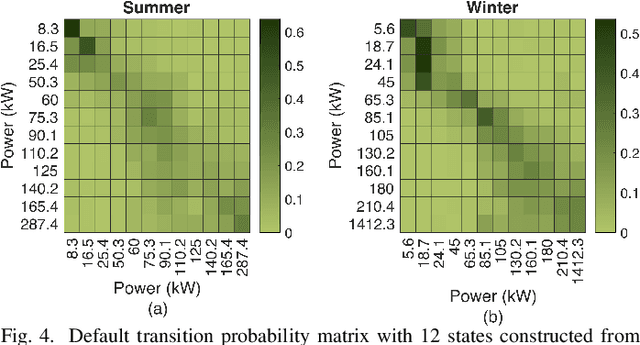
Abstract:Demand response (DR) programs aim to engage distributed small-scale flexible loads, such as thermostatically controllable loads (TCLs), to provide various grid support services. Linearly Solvable Markov Decision Process (LS-MDP), a variant of the traditional MDP, is used to model aggregated TCLs. Then, a model-free reinforcement learning technique called Z-learning is applied to learn the value function and derive the optimal policy for the DR aggregator to control TCLs. The learning process is robust against uncertainty that arises from estimating the passive dynamics of the aggregated TCLs. The efficiency of this data-driven learning is demonstrated through simulations on Heating, Cooling & Ventilation (HVAC) units in a testbed neighborhood of residential houses.
 Add to Chrome
Add to Chrome Add to Firefox
Add to Firefox Add to Edge
Add to Edge